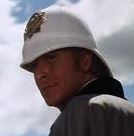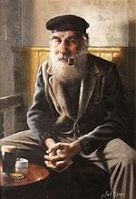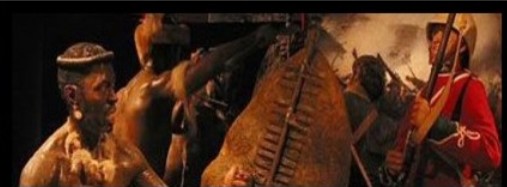| Latest topics | » The Pictorial World - March 15th 1879 Yesterday at 1:13 pm by ben2000 » The lost diary of Pvt James Owen Thu Jul 25, 2024 12:03 pm by miklew » Last of the 24th at Isandhlwana Wed Jul 24, 2024 6:16 pm by John Young » What was the uniform of field marshals/generals in the zulu war? Mon Jul 22, 2024 6:53 am by John Young » Henderson and the NNH at Rorke's Drift  Sat Jul 20, 2024 12:17 pm by SRB1965 » Capt. D. Hayes 1/3rd Regt., NNC Thu Jul 18, 2024 11:11 am by Julian Whybra » The Wrecked Camp Wed Jul 17, 2024 4:33 pm by Julian Whybra » Private N/N John Robert Branch 90th Regiment and his discovered diary Mon Jul 15, 2024 8:53 pm by 1879graves » Private John Scott 24th Regiment a fugitive at large Sun Jul 14, 2024 12:06 pm by 1879graves » 90th foot sgt T. Collins 214 Sun Jul 14, 2024 10:57 am by johnman » Baron Von Steitencron Wed Jul 10, 2024 3:10 pm by Julian Whybra » Sgt Joseph Windridge, Defender of Rorke's Drift - Memorial Tue Jul 09, 2024 3:15 am by 90th » Writing advice Sun Jul 07, 2024 4:04 pm by Julian Whybra » South Africa 1877-79, 1 clasp, 1877-8-9 (4389 Fr. Sergt. S. Smith. O/2. Bde. R.A.) Sun Jul 07, 2024 9:30 am by rai » The trashing of the Zulu monument to the brave warriors at Isandlawana March 12, 2024 has been blamed on scrap metal scavengers. Thu Jul 04, 2024 7:41 pm by ADMIN» The Goodwill Zulu Festival: Celebrating the Welsh and KwaZulu Natal Shared Heritage. Thu Jul 04, 2024 7:27 pm by ADMIN» Any nominal role of G Coy 2/24th regiment  Thu Jul 04, 2024 11:18 am by Wayne » Bassage Diary Thu Jul 04, 2024 9:31 am by Julian Whybra » Prior to Sihayo's Kraal  Thu Jul 04, 2024 9:19 am by 90th » British Fort Locations Thu Jul 04, 2024 3:40 am by 90th » Sergeant 1064 Tom Hick / Hicks G Company 2/24th Regiment Wed Jul 03, 2024 11:05 am by Julian Whybra » A Hungarian soldier in the Zulu War (?) Fri Jun 28, 2024 2:31 pm by Mr M. Cooper » Private 25B/279 Henry Sears Bugler E Company 24th Reg. KIA Isandlwana Thu Jun 27, 2024 1:07 pm by gardner1879 » Hamilton Browne's birthday Fri Jun 21, 2024 9:22 am by Julian Whybra » Zulu "Corps" Thu Jun 20, 2024 6:01 pm by Hobbes » Army Pay Department Personnel Thu Jun 20, 2024 11:49 am by Julian Whybra » Ntshingwayo birth date Sun Jun 16, 2024 11:37 am by Hobbes » Zibhebhu and Cetshwayo's family Wed Jun 05, 2024 9:11 pm by Julian Whybra » Smith's Store/Hotel Wed Jun 05, 2024 6:06 pm by Julian Whybra » Corporal James Frowen Williams F Company.  Tue Jun 04, 2024 5:20 pm by Julian Whybra » Shaka iLembe Sat Jun 01, 2024 1:27 pm by Jon84 » Bugler 1415 Thomas Finn / Flin 90th Regiment  Sat May 25, 2024 11:28 am by johnman » Inspector-General Evelyn Richard Hugh Pollard Tue May 14, 2024 10:13 am by ADMIN» Alfred Fairlie Henderson photographs. Sat May 11, 2024 8:01 am by Julian Whybra » Fairlie's Native Police Thu May 02, 2024 9:12 pm by Hobbes |
| July 2024 | | Mon | Tue | Wed | Thu | Fri | Sat | Sun |
|---|
| 1 | 2 | 3 | 4 | 5 | 6 | 7 | | 8 | 9 | 10 | 11 | 12 | 13 | 14 | | 15 | 16 | 17 | 18 | 19 | 20 | 21 | | 22 | 23 | 24 | 25 | 26 | 27 | 28 | | 29 | 30 | 31 | | | | |  Calendar Calendar |
|
| Top posting users this month | |
| New topics | » The Pictorial World - March 15th 1879 Yesterday at 1:13 pm by ben2000 » The lost diary of Pvt James Owen Thu Jul 25, 2024 12:03 pm by miklew » Last of the 24th at Isandhlwana Wed Jul 24, 2024 5:53 pm by miklew » What was the uniform of field marshals/generals in the zulu war? Sun Jul 21, 2024 12:30 pm by darthvaix » Henderson and the NNH at Rorke's Drift  Fri Jul 19, 2024 1:29 pm by SRB1965 » Capt. D. Hayes 1/3rd Regt., NNC Wed Jul 17, 2024 10:52 pm by Julian Whybra » The Wrecked Camp Sun Jul 14, 2024 8:51 am by 61MECH » The trashing of the Zulu monument to the brave warriors at Isandlawana March 12, 2024 has been blamed on scrap metal scavengers. Thu Jul 04, 2024 7:41 pm by ADMIN» The Goodwill Zulu Festival: Celebrating the Welsh and KwaZulu Natal Shared Heritage. Thu Jul 04, 2024 7:27 pm by ADMIN |
| Zero tolerance to harassment and bullying. | |
Due to recent events on this forum, we have now imposed a zero tolerance to harassment and bullying. All reports will be treated seriously, and will lead to a permanent ban of both membership and IP address.
Any member blatantly corresponding in a deliberate and provoking manner will be removed from the forum as quickly as possible after the event.
If any members are being harassed behind the scenes PM facility by any member/s here at 1879zuluwar.com please do not hesitate to forward the offending text.
We are all here to communicate and enjoy the various discussions and information on the Anglo Zulu War of 1879. Opinions will vary, you will agree and disagree with one another, we will have debates, and so it goes.
There is no excuse for harassment or bullying of anyone by another person on this site.
The above applies to the main frame areas of the forum.
The ring which is the last section on the forum, is available to those members who wish to partake in slagging matches. That section cannot be viewed by guests and only viewed by members that wish to do so. |
| Fair Use Notice | | Fair use notice.
This website may contain copyrighted material the use of which has not been specifically authorised by the copyright owner.
We are making such material and images are available in our efforts to advance the understanding of the “Anglo Zulu War of 1879. For educational & recreational purposes.
We believe this constitutes a 'fair use' of any such copyrighted material, as provided for in UK copyright law. The information is purely for educational and research purposes only. No profit is made from any part of this website.
If you hold the copyright on any material on the site, or material refers to you, and you would like it to be removed, please let us know and we will work with you to reach a resolution. |
| | | Bayonet drill Khambula |  |
| | | Author | Message |
|---|
sas1

Posts : 627
Join date : 2009-01-20
Age : 46
 |  Subject: Bayonet drill Khambula Subject: Bayonet drill Khambula  Sat Feb 21, 2009 11:54 am Sat Feb 21, 2009 11:54 am | |
| I was reading a reference book relating to the Battle of Khambula.
"Major Hackett and Lieutenant Bright were formed up outside the laager gate, ordered to fix bayonets and advance. The British soldier has always been renowned for his bayonet drills".
My question is "was there a special Bayonet drill formulated when fighting Zulu's.
Or was it the standard drill of that time...
sas1 |
|   | | ADMIN

Posts : 4354
Join date : 2008-11-01
Age : 65
Location : KENT
 |  Subject: Re: Bayonet drill Khambula Subject: Re: Bayonet drill Khambula  Sat Feb 21, 2009 3:32 pm Sat Feb 21, 2009 3:32 pm | |
| Something Like This. Watch the actions. [You must be registered and logged in to see this image.]
Last edited by ADMIN on Mon Apr 16, 2018 9:20 am; edited 2 times in total |
|   | | old historian2

Posts : 1093
Join date : 2009-01-14
Location : East London
 |  Subject: Re: Bayonet drill Khambula Subject: Re: Bayonet drill Khambula  Thu Feb 26, 2009 2:53 pm Thu Feb 26, 2009 2:53 pm | |
| Nice display of the regulation bayonet drill. (Very Clever)
There is a book that explains the points and moves of the drill.
Cheers
Old Historian 2 |
|   | | sas1

Posts : 627
Join date : 2009-01-20
Age : 46
 |  Subject: Re: Bayonet drill Khambula Subject: Re: Bayonet drill Khambula  Sun Mar 01, 2009 10:20 am Sun Mar 01, 2009 10:20 am | |
| Bayonets are more likely to figure in parades and inspections than any realistic training for combat. Realization that the awkwardness of stylized bayonet fighting movements is outdated is far from new. In the 1890s, General Evelyn Wood, VC, remarked that the bayonet training of the day was "more suitable for a Music Hall than for training men to fight."
There is no perfect close quarter weapon because attack and defence are very individualistic. The bayonet has to be one of least efficient close quarter weapon.Compare this stylized training approach to the fact that soldiers will often "club" their weapon, swinging the mass of the butt, the barrel as handle, because it was more effective.
sas1 |
|   | | sas1

Posts : 627
Join date : 2009-01-20
Age : 46
 |  Subject: Re: Bayonet drill Khambula Subject: Re: Bayonet drill Khambula  Thu Mar 05, 2009 7:38 pm Thu Mar 05, 2009 7:38 pm | |
| Its looks like bayonets were mainly used to remove fouled cartiridges from breeches, and open ammunition boxes.
Captain Essex's Evidence. Rorke's Drift, January 24, 1879.
With refrence to Isandlwana.
In a moment all was disorder, and few of the men of 1st Battalion 24th Regiment had time to fix bayonets before the enemy was among them using their assegais with fearful effect.
sas1 |
|   | | ADMIN

Posts : 4354
Join date : 2008-11-01
Age : 65
Location : KENT
 |  Subject: Re: Bayonet drill Khambula Subject: Re: Bayonet drill Khambula  Fri Mar 20, 2009 11:35 pm Fri Mar 20, 2009 11:35 pm | |
| |
|   | | | | Bayonet drill Khambula |  |
|
Similar topics |  |
|
| | Permissions in this forum: | You cannot reply to topics in this forum
| |
| |
| |
